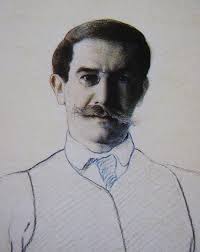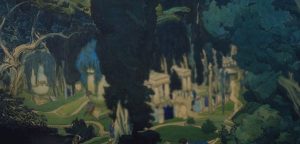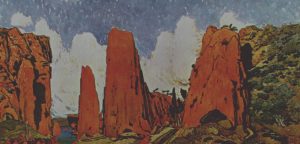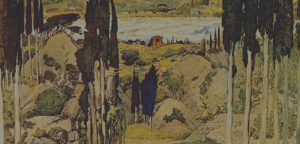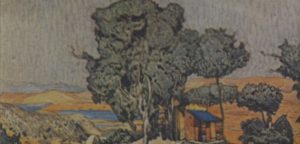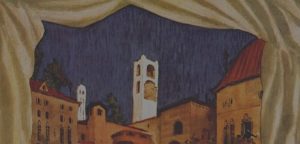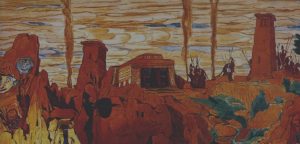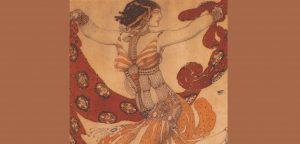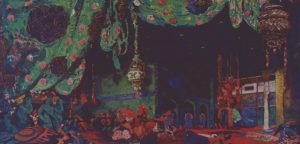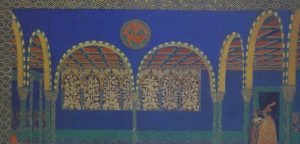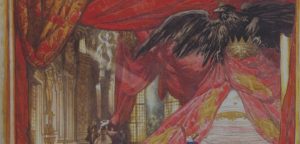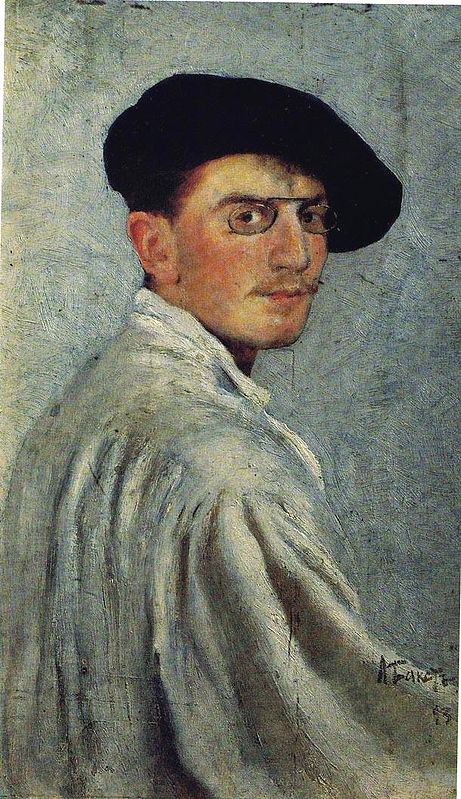Leon Bakst was born on the 27th of January in 1866 in Grodno (now in Belarus).
1866 - 1824
Leon Bakst
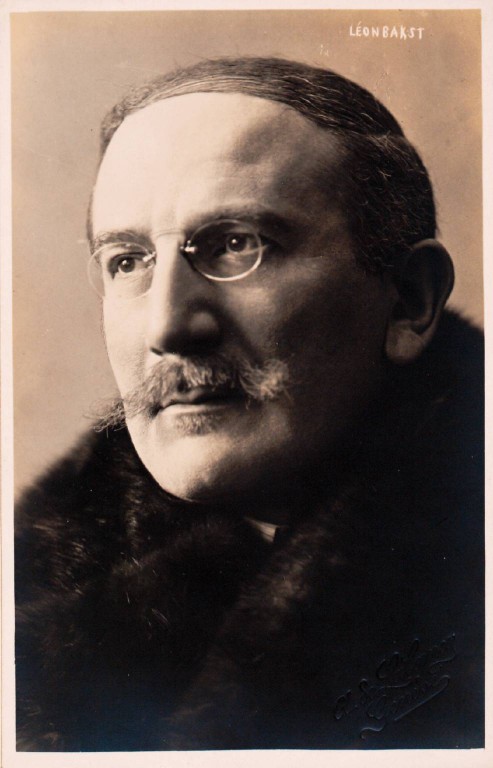
description
Leon Bakst (real name – Leib-Khaim Izrailevich Rosenberg) was a Russian artist of Jewish origin, designer, illustrator and set designer,.
He was born into the family of a small merchant, an orthodox Jew. Samuel Rosenberg, his father, was known as an authoritative expert on the Talmud, was adopted by his father-in-law Buster in order to circumvent the law on the Pale of Settlement and ensure the transfer of his only daughter to St. Petersburg.
He showed himself as an interesting painter, in particular – a portrait master. The most famous were the portrait of philosopher V. Rozanov, depicted with a statue of Isis, the plot “Portrait of S. Diaghilev with his old nanny,” a lyrical portrait of Pavel Tretyakov’s daughter Lyubov Gritsenko-Bakst.
Leon Bakst worked equally in St. Petersburg and Paris. He was a master of easel painting, in particular, portrait genre, theatrical graphics. An active member and organizer of the association “World of Art”, designed theatrical and art projects of S. Diaghilev for many years. The artist became one of the trendsetters of the European fashion for orientalism and suit exotics in the first quarter of the 20th century.
Key Ideas:
– Art-Nouveau of Leon Bakst, famous for its sophistication and delicacy, was oriented to the mass consumer, although he supported the symbolist principle of “art for art’s sake”. At the beginning of his creative career, he painted landscapes and created paintings of symbolic meaning. He worked in a variety of techniques – expressive flexible lines, a light brushstroke; sometimes in a pale palette, or, on the contrary, in a contrast-bright palette.
– Many reviews were received by the painting “Ancient horror” – Vyacheslav Ivanov dedicated a separate essay to it; S. Mamontov called it «a landscape depicted from an airplane», while M. Voloshin noted that “the viewer looks through the mirror thick glass of the underground aquarium.” Later, using the aesthetics and philosophy of Symbolism and being carried away by oriental motives (orientalism), Bakst began to create graphics in a recognizable style: asymmetric construction, special ornamentation, decorativeness.
– Original compilation of different styles characteristic of the artist, which he used in graphic works for many magazines, the main one among which was “The World of Art”, brought L. Bakst wide popularity. He introduces a wavy “modern” line, some eastern addiction to a planar drawing. Becoming the leading artist of the Russian ballet of Diaghilev, he impressed the viewer with fantasy and fabulous luxury, bold combinations of bright colors, refined sophistication of costumes.
– The talent of Leon Bakst, which most organically manifested itself in the scenography, was in demand in the productions of Anna Pavlova and Ida Rubinstein. His ballet master decorations for the plays «Cleopatra» by Anton Arensky (1909), «The Firebird» by Igor Stravinsky (1910) expressed enchanting figurative essence, besides, the artist managed to give the costumes magnificent luxuries of the east, but also the relaxed ease of clothes of antiquity. It was very important for the modernization of the ballet, gradually departing from the convention of canonical poses and movements towards the “rhythm of the free body.”
1866
1880
1889 - 1891
1893 - 1897
1898
1899 - 1902
1903 - 1906
1907 - 1909
1910 - 1914
1918
1920
1924
The birth of the artist
He earned by illustrating books for children
Studied at the 6th St. Petersburg Gymnasium (he did not finish it). He became the winner of the gymnasium competition for the best portrait of Zhukovsky. Was an auditor at the Academy of Arts for 4 years (not graduated). He earned by illustrating books for children. He studied the technique of watercolors at the studio of Albert Benois.
Prepared his first solo exhibition
Prepared his first solo exhibition, taking as a pseudonym a shortened version of the name of his grandfather Baxter; exhibited his works at the Society of Russian Watercolorists; traveled for creative purposes throughout Europe.
In Paris, he studied at private studios of J. Jerome, R. Julien
In Paris, he studied at private studios of J. Jerome, R. Julien, was a student of Finnish master Edelfelt. Following his idol, Delacroix, he went to Algeria. Often visited St. Petersburg, was a member of the circle of writers and artists, grouped around S. Diaghilev and Alexander Benois, became one of the founders of the World of Art union.
The graphics of Bakst, appearing in the magazine, brought him fame
Participated in the foundation of the magazine “World of Art.” The graphics of Bakst, appearing in the magazine, brought him fame. He showed his works at the “First Exhibition of Russian and Finnish Artists” (the organizer of it was S. Diaghilev), at the exhibitions “Secession” (Munich), in the Artel of Russian artists, etc.
Was honored with the title of "An Honorary Citizen of St. Petersburg"
Was honored with the title of “An Honorary Citizen of St. Petersburg”; created portraits of Malyavin, Levitan, Rozanov and others. He taught drawing to the heirs of the Grand Duke Vladimir. Received an order from Nicholas II to depict “The Meeting of Russian Mariners in Paris”. He made his debut in the theater as a decorator and costume designer.
In Warsaw, he took Lutheranism
In Warsaw, he took Lutheranism to marry the daughter of Pavel Tretyakov, Lyubov Pavlovna, the widow of artist N. N. Gritsenko. With the same purpose, he received the highest permission to be called Bakst. He painted portraits of A. Bely and Z. Gippius.
Visited Greece
Visited Greece (the trip is described in the book “Serov and I in Greece”, published in 1923 in a separate edition), created Mediterranean landscapes and panels “Terror Antiquus”. He worked for the magazines “Bug” and “Hell’s Mail”, “Libra”, “Satyricon”, later – “Apollo”. He taught at the private school-studio of E. Zvantseva. Even before the birth of his son, he divorced his wife and again moved from Christianity to Judaism, for which he was expelled from St. Petersburg as a non-resident. Since 1908, he became a permanent author of the scenery of Diaghilev’s productions (Cleopatra, 1909).
He lived in Paris
He lived in Paris, working on theatrical sceneries and making a real revolution in their quality. He designed “Scheherazade”, “Carnival”, “Narcissus”, etc. Participated in the productions of I. Rubinstein and A. Pavlova; was elected a member of the Academy of Arts.
Broke off the relations with the Ballets Russes and Diaghilev
Broke off the relations with the Ballets Russes and Diaghilev, arranged performances for the theaters of the Grand Opera and the Michel Theater, acted as a librettist, painted portraits, and collaborated with the company Paken and the fashion legislators of Paris.
He renewed his collaboration with Diaghilev
He renewed his collaboration with Diaghilev, before interrupted for three years, by decorating his ballet The Sleeping Beauty (1921). By the order of financier D. Rothschild, created a large series of panels to the same fairy tale for his London mansion.
The death
The artist died on the 28th of December in 1924 in Rueil-Malmaison, near Paris.

